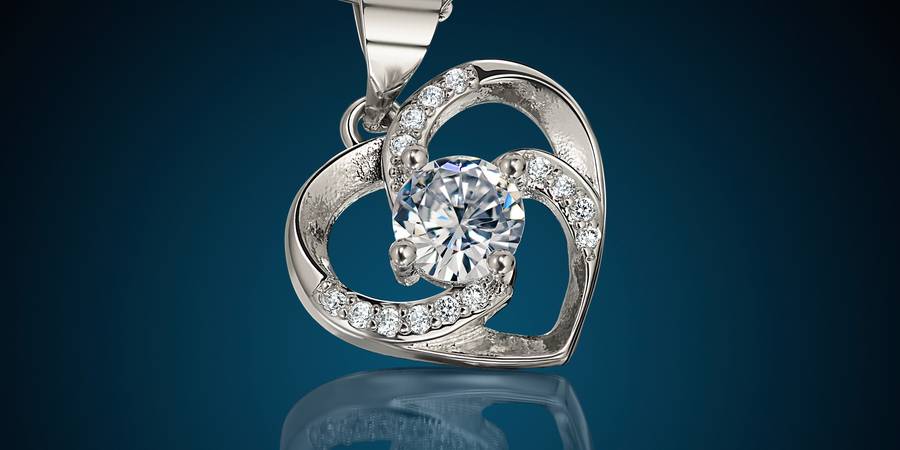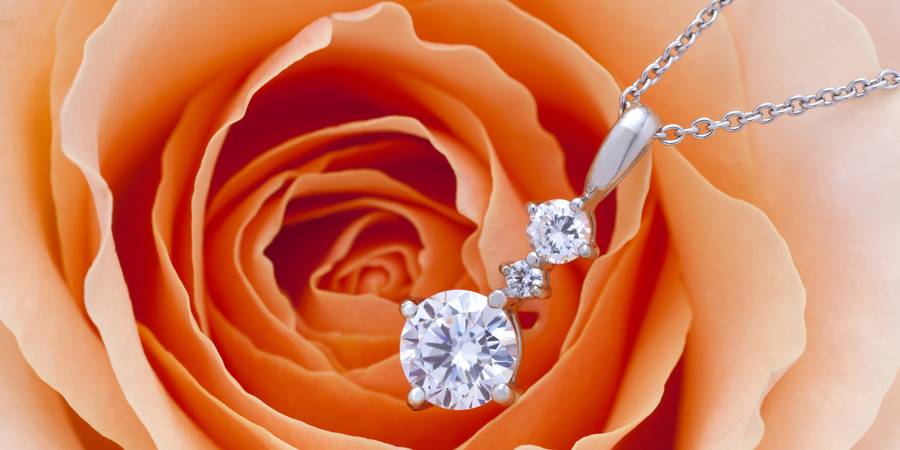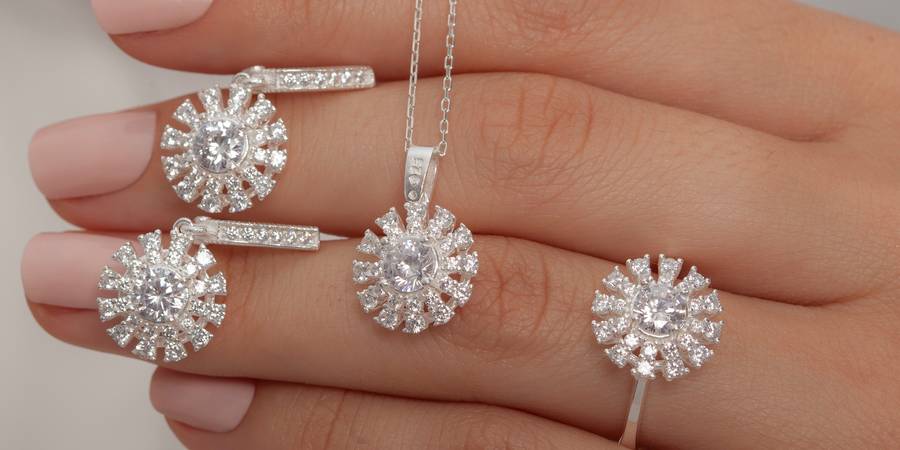If you’re curious about the cost of a genuine diamond necklace, you’ve come to the right place.
In this article, we will provide you with an answer and delve into the details. The price of a diamond necklace can range from $500 to $36,000, depending on factors such as quality and design.
However, it’s important to note that truly unique and exceptional gems may command higher prices. You might be wondering why diamond prices can be so steep.
To fully grasp the answer, it’s crucial to understand what diamonds are, how they are formed, how their pricing is determined, why it often tends to be high, and other fascinating aspects.
Let’s embark on this journey from the very beginning!
DESIGN YOUR OWN ENGAGEMENT RING: START WITH A SETTING OR START WITH A DIAMOND. IT’S REALLY UP TO YOU!

Diamond, Their Characteristics, Worth, and Many More
To gain a better understanding of diamond qualities, let’s delve into their value, price, and worth.
Diamonds are composed of carbon atoms arranged in a crystal structure known as the diamond cubic crystal structure. While graphite is another solid form of carbon, diamonds possess exceptional hardness, unmatched brilliance, and hold significant emotional value.
Interestingly, diamonds are the only substance that can scratch their own surface, despite being primarily composed of carbon atoms.
Now that we have defined what a diamond is, let’s explore how they are formed.
Diamonds originate from carbon atoms that come together under extreme conditions of pressure and heat to form crystals. This process occurs deep within the Earth, typically 90 to 125 miles below the surface, where carbon reserves exist.
The formation of diamonds takes place over varying timescales, with some stones developing over millions of years while others take days or months.
In addition to their hardness, diamonds exhibit a remarkable range of chemical, physical, and mechanical properties, including low coefficient of friction, significant thermal conductivity, high electrical resistance, low thermal expansion coefficient, and strength. They also possess extensive optical transparency across ultraviolet to infrared wavelengths.
Diamond sizes are measured in millimeters (mm) and are often associated with carat weight. For example, a 1-carat round diamond typically has a diameter of 6.5 mm, while a 1.25-carat diamond has a diameter of 6.8 mm. Square-cut diamonds, like princess or cushion cuts, have different measurements, with a 1-carat typically measuring around 5.5 mm and a 1.25-carat measuring around 6 mm.
Diamond production is gradually declining as mines reach the end of their productive life.
Now, let’s address the question of why diamonds are expensive.
Diamonds command high prices due to factors such as substantial marketing costs, limited availability of exceptional grade stones, and strong demand.
Now, let’s shift our focus to the factors that influence the value of a diamond.

What Factors Affect the Value of a Diamond?
To determine the value of a diamond, its rarity is a key factor. Several factors influence rarity and, consequently, the value of a diamond:
Carat: The weight of a diamond is measured in carats. Larger diamonds with a higher carat weight are generally more expensive due to their rarity. However, smaller diamonds can still be of high quality and possess excellent cuts.
Clarity: Clarity refers to the presence of internal marks (inclusions) and external influences (blemishes) in a diamond. A rating scale is used to assess clarity, ranging from “Flawless” (no visible flaws at 10x magnification) to “Included 3” (inclusions impacting clarity). Flawless diamonds are rare but highly valued.
Cut: The cut of a diamond plays a crucial role in its brilliance. Well-cut diamonds have facets designed to reflect maximum light. Skilled craftsmen determine the optimal cut for each diamond, and a poorly cut diamond can diminish its brilliance.
Color: Colorless white diamonds are the most valuable. Diamonds with yellowish tints are more common and considered less valuable. However, “fancy-color” diamonds in shades of blue, red, or green are exceptionally rare and therefore expensive.
Considering these factors, the cost of a genuine diamond necklace can range anywhere from $500 to $36,000, depending on the quality and design of the diamond.
It’s important to note that purchasing from a trusted vendor is crucial to ensure the authenticity and quality of the diamond necklace.

What Is the Value of a Diamond Necklace?
The Drawbacks of Investing in Diamond Jewelry
While there are benefits to investing in diamond jewelry, there are also some drawbacks that should be considered:
Lack of liquidity: Unlike stocks or other financial assets, diamond jewelry can be challenging to sell quickly. Finding a buyer who is willing to pay the desired price can take time, especially for unique or high-value pieces. The lack of a liquid market for diamond jewelry can make it difficult to convert the investment into cash when needed.
Subject to market fluctuations: The value of diamonds can be subject to market fluctuations and can vary based on supply and demand. Economic factors and trends in the jewelry industry can affect the resale value of diamond jewelry. It’s important to stay informed about market conditions and work with reputable jewelers or appraisers to understand the current value of your investment.
Maintenance and insurance costs: Diamond jewelry requires proper care and maintenance to preserve its value. Regular cleaning, inspections, and potential repairs can incur additional costs over time. Additionally, insuring valuable diamond jewelry against loss, theft, or damage can also add to the overall expenses associated with the investment.
Counterfeit and quality concerns: The diamond industry has had instances of counterfeit stones or misrepresented quality. Investing in diamond jewelry requires knowledge and expertise to ensure that you are purchasing genuine and high-quality diamonds. It’s important to work with reputable jewelers and obtain proper certifications for the diamonds in your jewelry.
Limited diversification: Investing a significant amount of money in diamond jewelry can lead to a lack of diversification in your investment portfolio. It’s generally recommended to have a diversified investment portfolio to spread risk and potentially maximize returns. Relying solely on diamond jewelry as an investment may limit your exposure to other asset classes and investment opportunities.
While diamond jewelry can offer certain advantages as an investment, such as portability and durability, it’s important to consider the potential drawbacks as well. Lack of liquidity, market fluctuations, maintenance costs, quality concerns, and limited diversification are factors to be aware of before investing in diamond jewelry. It’s advisable to carefully assess your investment goals, do thorough research, and seek professional advice to make informed decisions about investing in diamond jewelry or any other form of investment.

What Are the Risks and Cons of Buying Diamond Jewelry?
In conclusion, while there are potential benefits to investing in diamond jewelry, such as its durability and the ability to enjoy and wear the investment, there are also significant drawbacks to consider. These drawbacks include the lack of price transparency and the absence of a standardized price index for diamonds, as well as the challenges in selling diamond jewelry at the desired price. Additionally, the lack of traceability in the diamond market can pose risks when it comes to reselling the jewelry. Furthermore, diamond jewelry requires long-term commitment and patience to realize potential profits, making it less suitable for those seeking quick returns or short-term investments. Ultimately, it is crucial to carefully weigh the pros and cons and consider one’s investment goals and risk tolerance before deciding to invest in diamond jewelry.
Final Thoughts
We trust that our comprehensive information on diamonds, including their value, cost, and related topics, has effectively addressed your initial inquiry regarding the price of a genuine diamond necklace.
Moreover, we aspire to have provided a clear understanding of the factors that influence diamond prices and why they vary.
To recapitulate, the cost of a diamond necklace can range between $500 and $36,000, contingent upon its quality and design.
For further elucidation, we will delve deeper into these aspects in the subsequent sections. It has been a pleasure compiling this information for you, and we sincerely hope you found it informative and enjoyable to read!


